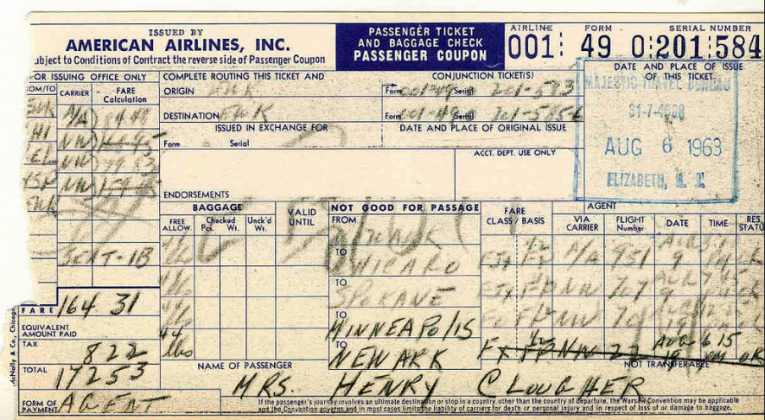Airplanes may be more crowded than ever, but there is some good news: You’re paying lower ticket prices. Fare wars, ultra-low cost carriers (ULCC) and low fuel prices mean that there are plenty of passengers who want to fly and plenty of availability to do so, but prices are at their lowest since 2014.
Measuring Pricing Strength

One of the key figures that airlines use to measure market strength is revenue per available seat mile, or RASM. RASM is a measure of how many cents the company generates to fly one seat one mile, whether that seat has a butt in it or not. For example, let’s take a plane with 50 seats that is completing a 100 mile trip. Half the passengers paid $50 for their seats and the other half paid $100. The total available seat miles (ASM) are 50 seats X 100 miles, or 5,000 ASM. The total revenue is (25 passengers X $50) + (25 passengers X $100), or $3,750. The RASM is $3,750 / 5,000, or $.75. RASM serves as a combination of load factor and prices. Any airline can generate high load factors (the percentage of seats that are filled on a given flight) by lowering prices. Likewise, they could charge $1,000 per seat, making their yields (price per seat mile that actually has a butt in it) high, but load factors low. RASM combines the two factors.
How Bad Is It?
Last summer, American Airlines stunned the market by announcing that its RASM would be negative until at least the second half of 2016. Many of their competitors laughed them off, but most are paying the price now, with both lower load factors and lower yields. Recently announced results from the airlines aren’t particularly rosy (for the airlines, at least):
- Based on May data, American is expecting second quarter RASM to be down 6 to 8%, year-over-year. At least for the month of May, load factor was only down about a percent, meaning that the rest of the decline was in pricing (yield).
- United is no better. It is calling for a 6.5 to 8.5% decline, with load factors costing them about 1.5%. In other words, their price declines were similar to American’s.
- Delta is the big “winner” among the network carriers, down only 5% in the month of May. That’s a slightly greater decline that what they are expecting for the whole quarter.
- On the other hand, Southwest announced that it saw higher load factors for the month and expects positive RASM for the quarter.
There are a couple of reasons for the difference. First, the network carriers have more exposure to last-minute business traffic than Southwest does. As that market slows, or gets competed away, there is an outsized effect on revenues. Second, Southwest doesn’t have nearly the international exposure that the network carriers do, protecting them from currency swings. Combine those two factors with Southwest’s growth in Dallas and the airline has managed to stay positive even as ticket prices have declined significantly at its competitors.
Airline Stocks

Airline stocks have felt the pain, with the three major network carriers down anywhere from 30-45% from their highs (and Southwest down a more modest 20%). It may seem odd that the stocks are down so much with RASM only down about 10% from its peak, but a quick look at airline earnings shows the importance of pricing in the equation.
Case Study: American Airlines (AAL)
In 2015, American airlines earned almost $6.5b, which came out to a hefty $9.63 per share. That number is the “net income,” which is the profit left after all costs have been subtracted out. The net profit margin was 15%, meaning that, for every dollar of revenue the airline took in, it kept $.15. Not too shabby.
Now, let’s assume that pricing had been just a little worse, say, just 1% worse than it was. Instead of $41b in total sales, the airline would have earned $40.6b. Not much of a difference, right? For profits, though, it is. Costs on an airline are mostly fixed; you’re going to be paying for the plane, its fuel, its labor, etc. regardless of how many people are on the plane. So even though revenue declined by only a percent, the costs didn’t decline at all. You still have to pay your pilots. You still have interest payments on your debt. Heck, you probably even have to cater the extra can of Coke, just in case. So while your total revenue only went down 1% ($410m), your total profit went down by 6% (410/6,500)! While that number isn’t exact (There would be microscopic adjustments to a few fees, for example.), it’s close enough for the sake of the example. Clearly, a 6-8% move in pricing would have a tremendous effect on pricing.
The Bottom Line
Enjoy your “cheap” tickets while you can get them. As long as the economy holds in, airlines will start to rejigger capacity so that supply better matches demand and ticket prices move back up.



